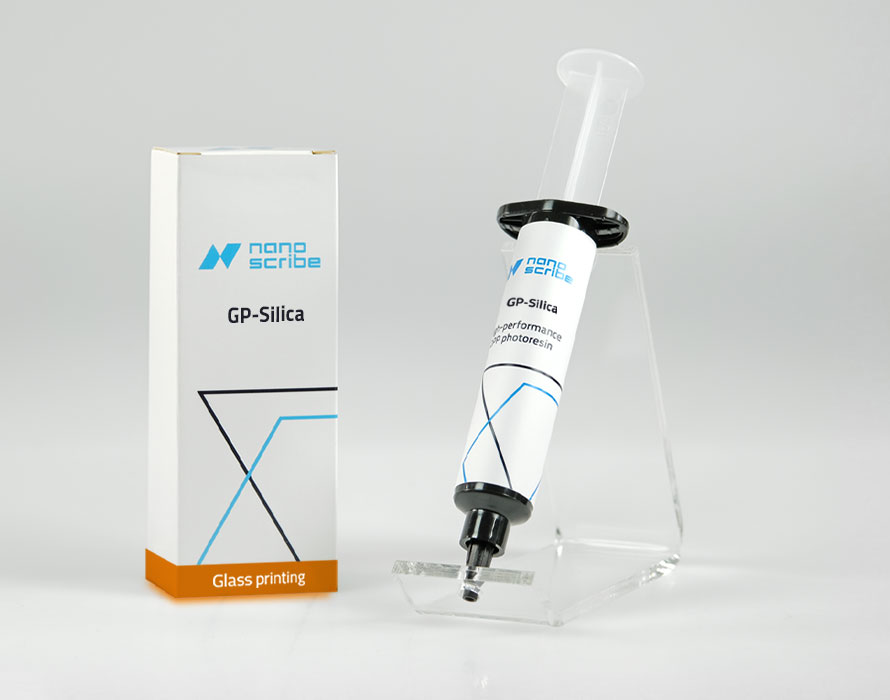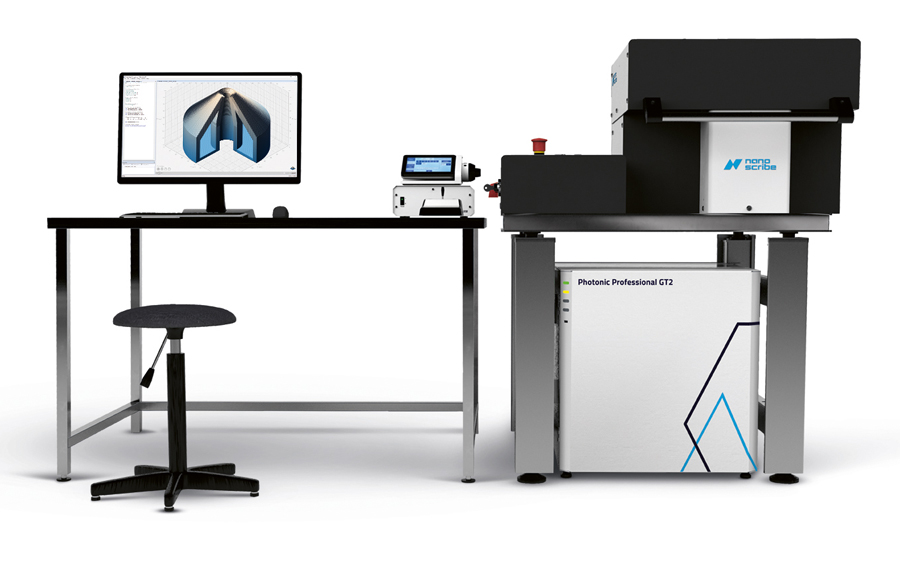The Glass Printing Explorer Set is beneficial for high-precision 3D printing of applications for which high temperature resistance combined which mechanical and chemical stability as well as optical transparency are crucial. Two-Photon Polymerization (2PP) of fused silica glass advances the exploration of new applications in life sciences, microfluidics, microoptics and other fields by providing researchers with the superior properties of glass. “GP-Silica has great potential for our research manufacturing complex microfluidics systems, although the required thermal post-processing is demanding”, says Professor Dr. Nicolas Muller, Assistant Professor and Head of Graphical Printing at the School of Engineering and Architecture of Fribourg (Switzerland), summarizing the opportunities offered by the photoresin with regard to his intended research projects.
Glass as a new material class in 3D Microfabrication
The new photoresin GP-Silica establishes a new material class for Two-Photon Polymerization based 3D Microfabrication and was developed in collaboration with Glassomer GmbH, a recognized specialist in room temperature shaping glass. The inorganic printing material is a composite of silica nanoparticles dispersed in a photocurable binder matrix and features outstanding characteristics of silica glass, such as high mechanical, thermal and chemical stability. This enables the 3D printing of glass microstructures with smooth optical quality surfaces. Due to an optical transmission window that extends from the UV to the infrared region, the new material is also suitable for imaging applications in life sciences, microfluidics, microreactors or microoptics.
How to combine 3D printing with the processing of glass
The new photoresin is a novel material for 3D Microfabrication and optimized for Nanoscribe 3D printers. As typical for glass manufacturing, thermal treatments are necessary: The fabrication process starts with the familiar high-precision 3D printing process of microstructures.





